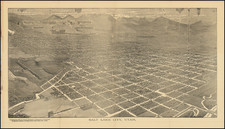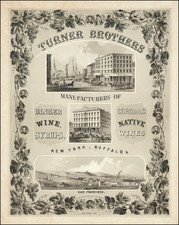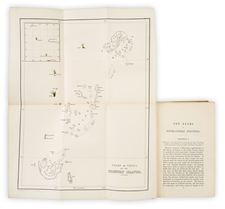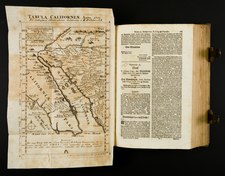Nice example of the infamous William Bridges "pirate" edition of Joseph Francois Mangin and Casimir Goerck's 1803 A Plan and Regulation of the City of New York, here published without attribution to Mangin-Goerck in Isaac Riley's 1807 The Picture of New-York...
The plan gained notoriety as one of two high-profile examples of Bridges taking credit for maps for which he had done almost none of the real work. William Bridges made a splash in the New York when he arrived there from England in 1805 or '06. He had scarcely settled in New York when he received the job of City Surveyor, placing him in competition with a number of established mapmakers, most importantly John Randel Jr. Bridges took Randel's extensive survey work for the first the initial layout of the New York City grid and turned it into the famous Commissioner's Plan, which he published in 1811 - that map was also engraved by Peter Maverick. Despite the fact that the plan would have been impossible without Randel's survey maps, Bridges gave him no credit, and this resulted in a public disagreement, in which Bridges ultimately prevailed.
The present map follows the Mangin-Goerck in its scope and style. It covers lower Manhattan up to Spruce Street, with a characteristic rectilinear look that extended to the signature angular shoreline of the Lower East Side. Bridges made some changes to the cartography, erasing much of the topographical and ground cover information, adding some new parks, and filling in the grid where development had occurred in the intervening years, but the map's lineage is obvious. Such copying and compiling was not uncommon among mapmakers dating back to at least to the Late Medieval era, however, Bridges was a scoundrel in many aspects of his life and this likely contributed to the way his cartographic plagiarism was interpreted.
On the left side of the map is a 52-point key, which references important public buildings, most churches (the Jewish Synagogue at Mill Street is also noted), as well as a hospital, college, theatre, etc. This is a slightly amended copy of the key included in Mangin-Goerck, which number 45 buildings of interest.
This is a key map for New York City from before its period of explosive growth later in the 19th century. It is also the only opportunity a collector will likely have to obtain a near-contemporary version of the Mangin-Goerck (which has come to market only twice in the last several decades).
William Bridges (1771 - July 10, 1814) was one of the foremost surveyors and mapmakers of early New York City. A native of England, Bridges probably arrived in the United States in either 1805 or 1806. This is known from his earliest record in the States, when he advertised as a tutor for architectural drawing from young men and women, in 1806. In that year he was also appointed City Surveyor for New York.
Bridges had a complicated and far from clean personal and professional record. In politics, he was a Federalist, and he in the course of his political activities he was accused of election fraud for apparently trying to force others to vote for his candidates.
In his professional life, he was dogged by similar controversy. Bridges is remembered today first as the publisher of the 1811 Commissioner's Plan of New York, which famously gave the city its grid. That map has been called "the single most important document in New York City's development" (Augustyn & Cohen, Manhattan in Maps). However, Bridges was not actually responsible for the surveys that resulted in the map; those were done by another man altogether, John Randel Jr. (1787-1865). Bridges enraged Randel by publishing the Commissioner's Plan crediting only himself. This resulted in a series of public arguments that lasted until Bridges's death in 1814. Despite the nefarious way in which he procured and published the map, Bridges managed to defend its copyright.
Bridges also issued a copy of the Mangin-Goerk Plan of New York, on which he similarly only credited himself.
In less than a decade in New York City, Bridges had a considerable influence on the history of the city, despite (or maybe because of) his dubious personal character.
For more on Bridges, see Marguerite Holloway's book The Measure of Manhattan.













![(Chicago World's Fair & St. Paul, Minn.) [Contemporary album of 71 Photographs of St. Paul and Chicago World's Fair, Columbian Exposition]](https://storage.googleapis.com/raremaps/img/small/87334.jpg)


